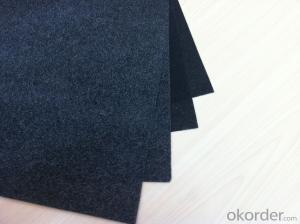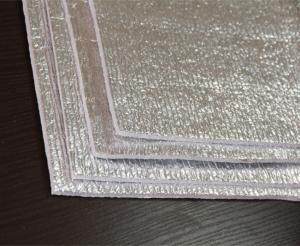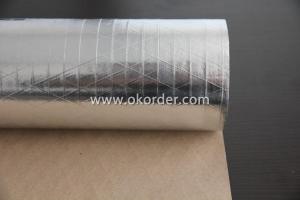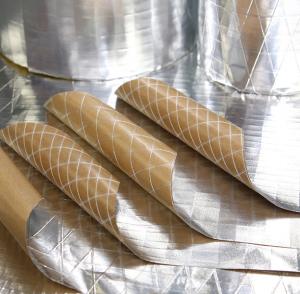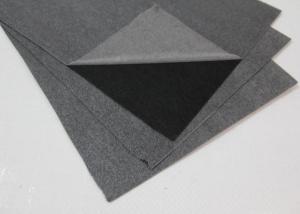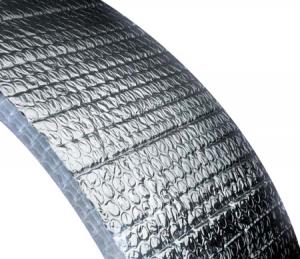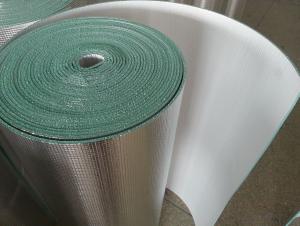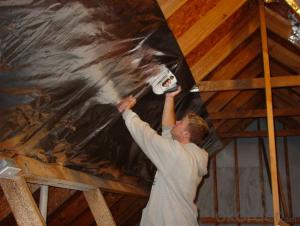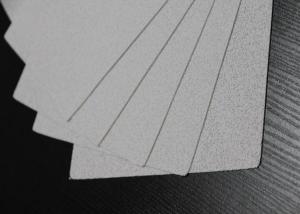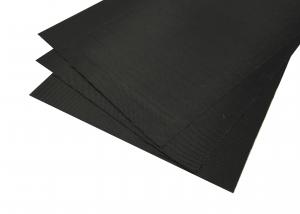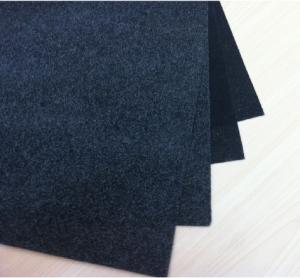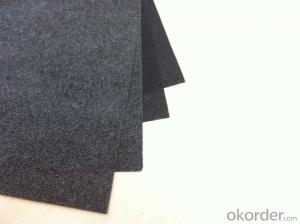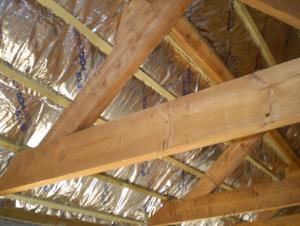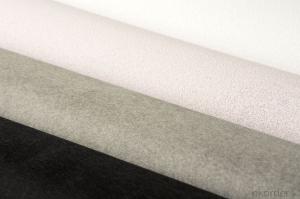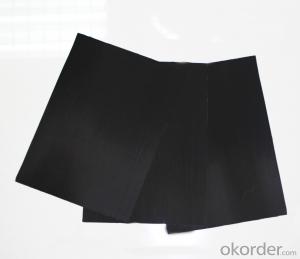C-CLASS BLACK FIBERGLASS TISSUE FOR INSULATION-65C
- Loading Port:
- Shanghai
- Payment Terms:
- TT OR LC
- Min Order Qty:
- 500 m²
- Supply Capability:
- 100000 m²/month
OKorder Service Pledge
OKorder Financial Service
You Might Also Like
Description of Fiberglass Tissue for Thermal Insulation
Fiberglass Tissue is a kind of facing, which is made of by the white fiberglass tissue, and special production process.
Good Aspect of Fiberglass Tissue for Thermal Insulation
Light weight
• Good visual effect
• High reflective insulation
Packing of Fiberglass Tissue for Thermal Insulation
1. Waterproof paper then PVC shrinking Film
2. Water-Proof film only
3. Heat resistant, water proof, stable at high temperature;
4.Environmentally friendly, no smell and not-toxic;
5.Smooth and clear surface;
Specification of Fiberglass Tissue for Thermal Insulation
PROPERTIES | UNIT | VALUE | TEST METHOD |
Basic weight | gsm | 98 | ASTM D646 |
Tensile strength: M. D. X. D. | N/25mm | 132 65 | ASTM D828 |
Burst strength | N | 30 | ASTM D774 |
Reflectivity of foil surface | % | 95 | ---------- |
Temp. Resistance | -29°C 66°C | No Delamination No Delamination | ASTM C1263 |
Water vapor permeance | ng/N.s | 1.15 | ASTM E-96 |
Pictures of Fiberglass Tissue for Thermal Insulation
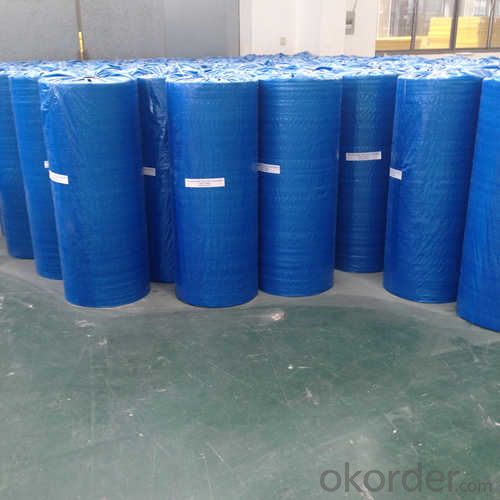

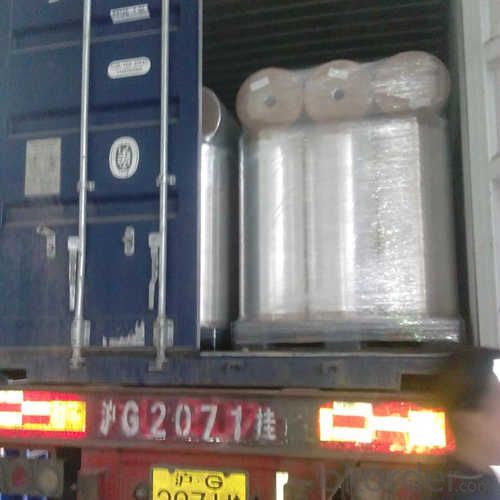

FAQ
We have organized several common questions for our clients,may help you sincerely:
1. What is the storage condition?
The Aluminum Foil Facing should be stored at room temperature and kept from wet and heat source.
2. How to guarantee the quality of the products?
We have established the international advanced quality management system,every link from raw material to final product we have strict quality test;We resolutely put an end to unqualified products flowing into the market. At the same time, we will provide necessary follow-up service assurance.
3. How long can we receive the product after purchase?
We resolutely put an end to unqualified products flowing into the market. At the same time, we will provide necessary follow-up service assurance.
- Q:What is the typical thickness of fiberglass facing?
- The specific application and requirements dictate the typical thickness of fiberglass facing, which can vary. Generally, fiberglass facing comes in thicknesses ranging from 0.5 millimeters to 2 millimeters. For lightweight and flexible applications like insulation and acoustic panels, thinner fiberglass facing (approximately 0.5 to 1 millimeter) is commonly utilized. On the other hand, heavier-duty applications in construction and industrial settings often require thicker fiberglass facing (around 1.5 to 2 millimeters) for enhanced strength and durability. To ensure optimal performance and functionality, it is crucial to consider the project's specific needs and specifications when determining the appropriate thickness of fiberglass facing.
- Q:Roof waterproof general use of what materials
- One, asphalt 1. Oil asphalt paper linoleum: three felt four oil or two carpets three oil stack construction. 2. Glass fiber cloth asphalt linoleum, glass fiber felt asphalt felt: cold asphalt binder or hot asphalt binder paste construction.
- Q:What are the potential drawbacks of using fiberglass facing?
- One potential drawback of using fiberglass facing is its susceptibility to damage and breakage. Unlike other materials like metal or concrete, fiberglass can be easily cracked or shattered if not handled with care. Another drawback is that fiberglass facing is not as strong or durable as some alternative materials, which could limit its use in certain applications that require higher strength or resistance to extreme conditions. Additionally, fiberglass can be more expensive compared to other materials, which may impact the overall cost of a project.
- Q:Does fiberglass facing require regular maintenance?
- No, fiberglass facing does not require regular maintenance.
- Q:Can fiberglass facing be recycled?
- Yes, fiberglass facing can be recycled.
- Q:What is the lifespan of fiberglass facing?
- The lifespan of fiberglass facing can vary depending on a few factors such as the quality of the material, the environment it is exposed to, and how well it is maintained. However, on average, fiberglass facing can last anywhere from 20 to 30 years. With proper care and maintenance, it is possible for fiberglass facing to last even longer. Regular cleaning, avoiding harsh chemicals or abrasive cleaners, and protecting it from excessive sunlight and extreme temperatures can help prolong its lifespan.
- Q:Is not the multi-layer membrane waterproof, the bottom of the membrane should use glass fiber mats?
- We project two layers of SBS membrane waterproof, is not just use PY on the line
- Q:What is fiberglass facing?
- Fiberglass facing refers to a thin layer of fiberglass material that is used to cover or coat surfaces for various purposes. It is typically made up of tightly woven strands of glass fibers that are bound together with a resin or adhesive. This facing material is known for its strength, durability, and resistance to heat, moisture, and chemicals. It is commonly used in construction, insulation, and manufacturing industries for applications such as insulation boards, ductwork, wall panels, and composite materials. The fiberglass facing provides an additional protective layer, enhancing the structural integrity and performance of the materials it is applied to.
- Q:Is fiberglass facing resistant to moisture or water damage?
- Yes, fiberglass facing is resistant to moisture and water damage. Fiberglass is composed of fine glass fibers woven together, which creates a strong and durable material. These fibers do not absorb moisture, making fiberglass facing highly resistant to water damage. It is commonly used in applications where moisture or water exposure is expected, such as in bathrooms, kitchens, and outdoor areas. Additionally, fiberglass facing is also resistant to mold and mildew growth, further enhancing its ability to withstand moisture.
- Q:What is the glass fiber needle felt dust filter bag
- The needles were used to puncture the chopped fiberglass mats, and the fibers between the felt layers, the fiberglass between the felt layer and the reinforcing glass cloth were mechanically entangled
1. Manufacturer Overview |
|
|---|---|
| Location | |
| Year Established | |
| Annual Output Value | |
| Main Markets | |
| Company Certifications | |
2. Manufacturer Certificates |
|
|---|---|
| a) Certification Name | |
| Range | |
| Reference | |
| Validity Period | |
3. Manufacturer Capability |
|
|---|---|
| a)Trade Capacity | |
| Nearest Port | |
| Export Percentage | |
| No.of Employees in Trade Department | |
| Language Spoken: | |
| b)Factory Information | |
| Factory Size: | |
| No. of Production Lines | |
| Contract Manufacturing | |
| Product Price Range | |
Send your message to us
C-CLASS BLACK FIBERGLASS TISSUE FOR INSULATION-65C
- Loading Port:
- Shanghai
- Payment Terms:
- TT OR LC
- Min Order Qty:
- 500 m²
- Supply Capability:
- 100000 m²/month
OKorder Service Pledge
OKorder Financial Service
Similar products
New products
Hot products
Related keywords
